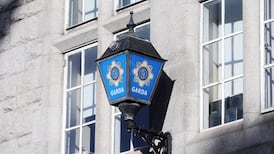History:The 16th president of the US, Abraham Lincoln, died on April 15th 1865, the day after he was shot by an assassin. On November 17th 1876, an attempt was made to steal his body from its resting place in the Lincoln Monument in Springfield, Illinois.
The attempt failed. However, the events surrounding the attempt caused those who were responsible for the security of the body to adopt unorthodox stratagems to protect it. Finally, on September 26th 1901, in the course of reconstruction work on the Monument and, on the instructions of Lincoln's son, Robert Lincoln, the body was placed in a coffin enclosed in a cage of steel bars, laid 10 feet below the floor of the catacomb in the Monument and covered with wet concrete.
Stealing Lincoln's Body describes what happened in the 36 years between his death and his final burial. The first excitement is the dispute between the widow, Mary Todd Lincoln, and the authorities in Springfield who wanted the grave to be on a site in the centre of the town. She was determined that her husband be placed in an out-of-town garden cemetery known as Oak Ridge. Security was minimal. The body was above ground in a marble sarcophagus. There was no night watchman. There was but a single padlock.
The crime of manufacturing counterfeit money was big business; its expansion had been facilitated by the American Civil War, and it was still vibrant 10 years after the war. The motivation for the body snatch was to use it as a ransom to force the Governor of Illinois to release one Ben Boyd, a highly skilled counterfeiter, from jail. His removal from the trade had dented the supply of counterfeit money. This in turn had reduced the turnover of the "shovers" who placed the counterfeit money in circulation. While Irish immigrants feature prominently amongst the villains who tried to steal the body, Celtic pride can take a bow, in that one Patrick D Tyrrell, born in Dublin, "honest, respectable, incorruptible", was the good cop who brought them to justice.
Following the attempted body snatch, the admirable custodian of the Monument, one John Power, devised a stratagem to foil any ghouls, and removed the body with four trustworthy accomplices from the tomb chamber to a shallow grave in the basement below. These five persons and four other worthies formed themselves into a secret society to guard the remains of Lincoln. After her death in 1882, Mary Lincoln was buried in the tomb chamber "beside" her late husband but, at the request of her son, Robert Lincoln, that night she too was removed to the basement and buried in a grave beside her assassinated husband. They were not,however, "at peace" because this temporary secret arrangement was revisited in 1887. By 1901 the Monument had become unsafe; during its reconstruction the bodies of the assassinated president and his widow were moved to their final resting place - buried in concrete and steel 10 feet below the catacomb floor.
The idea for such measures probably derived from the fears of George Pullman, the creator of the Pullman railway car, who had the "dubious distinction of being one of the most despised men in America". Robert Lincoln was chairman of the Pullman Company in 1901 and had been longtime legal adviser to Pullman. One commentator, on hearing of Pullman's elaborate burial arrangements in 1897, had said, ". . . the family, in their bereavement, was making sure the sonofabitch wasn't going to get up and come back." Robert Lincoln followed similar arrangements for his father, one of America's greatest icons.
Stealing Lincoln's Body tracks an unlikely series of events, reminiscent of a silent, black-and-white, cops-and-robbers movie, with passion and erudition.
John McBratney is a barrister
Stealing Lincoln's Body: A History By Thomas J Craughwell Belknap Press/Harvard University Press, 250pp. $24.95







